Discover 11 hidden attractions, cool sights, and unusual things to do in Jamestown (United States). Don't miss out on these must-see attractions: Fort Wetherill, Jamestown Windmill, and Fort Wetherill State Park. Also, be sure to include Friends Meetinghouse in your itinerary.
Below, you can find the list of the most amazing places you should visit in Jamestown (Rhode Island).
Table of Contents
Fort Wetherill

Fort Wetherill is a former coast artillery fort that occupies the southern portion of the eastern tip of Conanicut Island in Jamestown, Rhode Island. It sits atop high granite cliffs, overlooking the entrance to Narragansett Bay. Fort Dumpling from the American Revolutionary War occupied the site until it was built over by Fort Wetherill. Wetherill was deactivated and turned over to the State of Rhode Island after World War II and is now operated as Fort Wetherill State Park, a 51-acre reservation managed by the Rhode Island Department of Environmental Management.[1]
Address: 3 Fort Wetherill Road, Jamestown
Jamestown Windmill
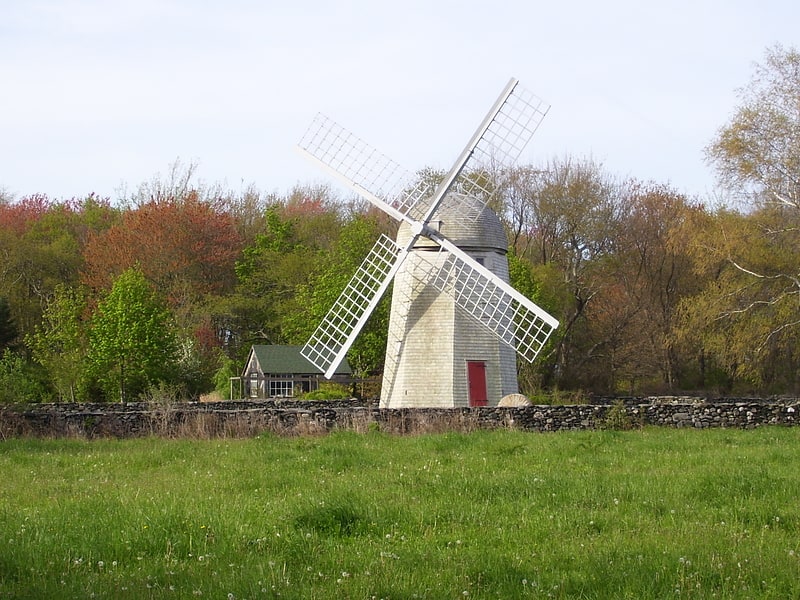
Historical place in Jamestown, Rhode Island. The Jamestown Windmill is a smock mill in Jamestown, Rhode Island within the Windmill Hill Historic District on North Road north of Weeden Lane.
The 30-foot (9.1 m) high windmill was built in 1787 to grind corn after the British occupational forces destroyed the previous mill around the time of the Battle of Rhode Island. It operated until 1896. Several renovations were done in the 20th century, and it is maintained by the Jamestown Historical Society. It was added to the National Register of Historic Places in 1973.[2]
Fort Wetherill State Park
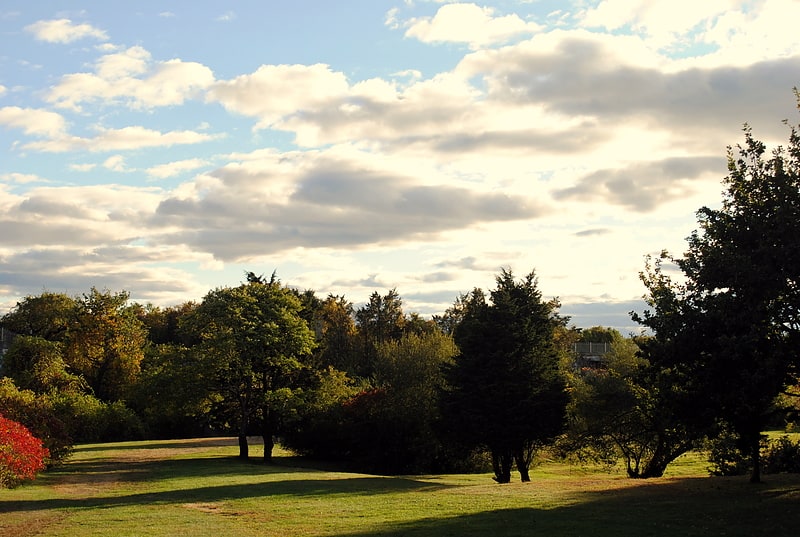
State park in Jamestown, Rhode Island. Fort Wetherill State Park is a public recreation area occupying 61.5 acres at the southeastern tip of Conanicut Island in the town of Jamestown, Rhode Island. The state park sits on the East Passage of Narragansett Bay opposite Fort Adams State Park. From 1901 through World War II, Fort Wetherill and Fort Adams were part of a string of coastal defenses designed to protect the bay's entrance points. The Fort Wetherill battery and training camp were acquired by the State of Rhode Island from the United States in 1972. The park is used for sightseeing, scuba diving, picnicking, boating, fishing, and hiking. As of 2020, the fort itself is almost completely covered in graffiti.[3]
Address: Fort Wetherill Road, 02835 Jamestown
Friends Meetinghouse
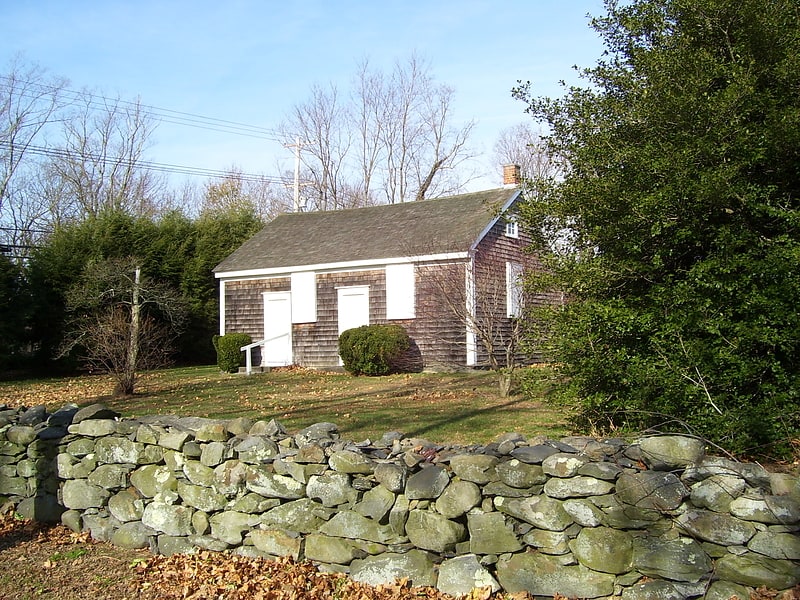
Quaker meeting house in Newport, Rhode Island. The Conanicut Friends Meetinghouse is a historic Quaker meeting house at the junction of North Road and Weeden Lane in Jamestown, Rhode Island.
The structure was built in 1786 to replace the original meeting house destroyed by the British after they occupied Conanicut Island in 1776. The building was added to the National Register of Historic Places in 1973, and is included in the Windmill Hill Historic District. It is still used for religious services during the summer.[4]
Address: Weeden Ln, 02835 Jamestown
Arts Center
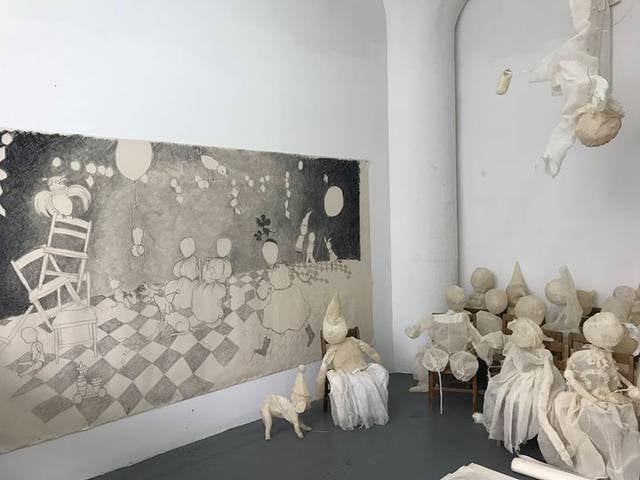
Non-profit. Jamestown Art Center is a non-profit arts organization with a gallery, art studios, education facilities, and event space in a renovated boat repair shop, located at 18 Valley Street in Jamestown, Rhode Island.
The organization's non-profit mission is to engage, enrich and inspire the community through extraordinary arts and educational experiences.
The JAC is operated by a volunteer Board of Directors, an Executive Director, and a staff of administrators, educators and volunteers. It is supported by philanthropic contributions and a membership program that includes supporters and affiliated artists.
The Jamestown Arts Center presents free art exhibitions in its galleries year-round, as well as outdoor sculptures and murals at its site, and a Biennial Outdoor Arts Experience exhibition of outdoor artworks throughout the town of Jamestown RI. Exhibitions have included the work of internationally exhibited artists such as Jenny Holzer, Barbara Kruger, Aboudia, Leslie Dill, Edwin Schlossberg, and Glenn Ligon.
The JAC offers arts education for people of all ages, providing a year-round schedule of classes, camps, and workshops for children, teens, and adults.[5]
Address: 18 Valley St, 02835-1446 Jamestown
Beavertail Lighthouse
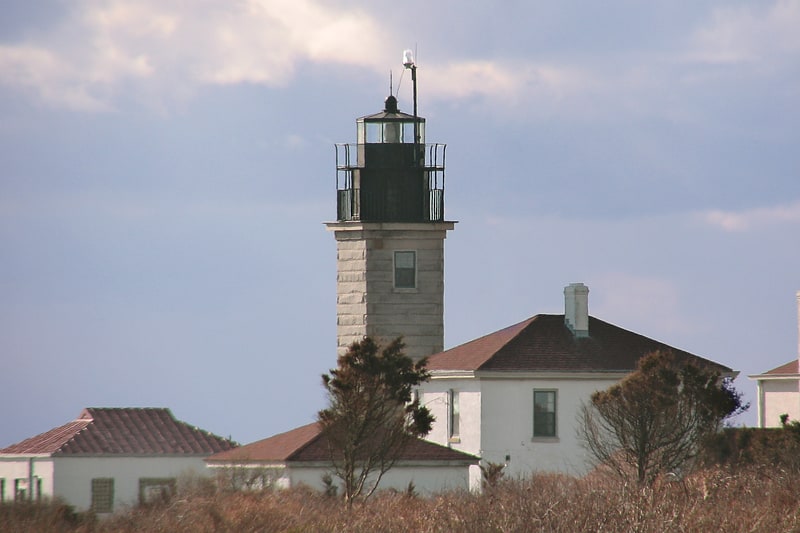
Museum in Jamestown, Rhode Island. Beavertail Lighthouse was built in 1856 and is the premier lighthouse in Rhode Island, marking the entrance to Narragansett Bay. The 64-foot lighthouse lies on the southernmost point of Conanicut Island in the town of Jamestown, Rhode Island in Beavertail State Park, on a site where beacons have stood since the early 18th century. The light provides navigation for boats and ships entering Narragansett Bay in the East Passage between Conanicut Island and Newport, Rhode Island on Aquidneck Island. Other lighthouses are visible from Beavertail Lighthouse, such as Castle Hill Lighthouse, Point Judith Light, and Rose Island Light.[6]
Conanicut Island Light

Lighthouse in Jamestown, Rhode Island. Conanicut Island Light, built in 1886, is an inactive lighthouse in Jamestown, Rhode Island.
The light was built primarily to assist the ferry between Jamestown and Newport, Rhode Island. The lighthouse lies on the northern tip of Conanicut Island in Jamestown. The light was deactivated in 1933 and its lantern was removed. In 1934 it was sold as government surplus and is now a private residence. The lighthouse is listed on the National Register of Historic Places. It was featured in Wes Anderson's 2012 film Moonrise Kingdom.[7]
Artillery Park
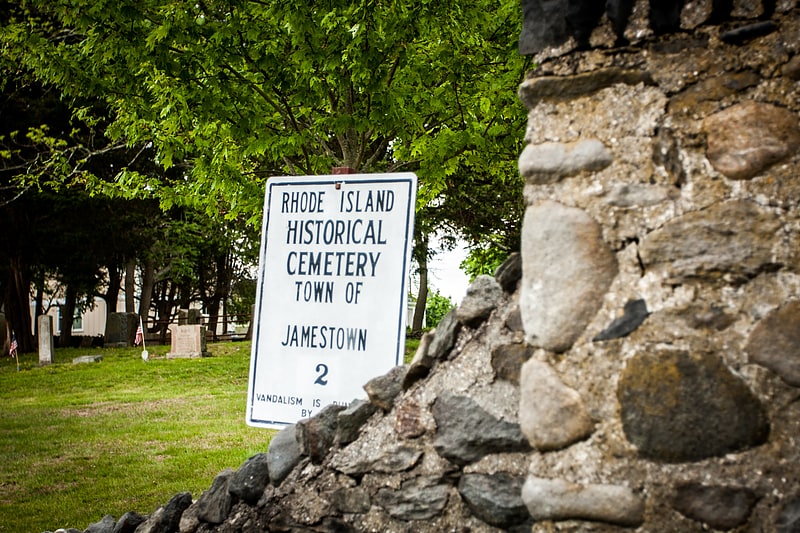
Cemetery in Jamestown, Rhode Island. The Artillery Park is an historic cemetery at North Road and Narragansett Avenue in Jamestown, Rhode Island. It is located at a high point on the southern part of Conanicut Island. It was originally laid out in 1656 as a burying ground and militia training ground, but appears to have been used as a burying ground only since the 1740s. When British forces occupied the island in 1776, there was a brief skirmish there, and the British afterward used the area as a military staging ground. The cemetery was listed on the National Register of Historic Places in 1973.[8]
Dutch Harbor Boat Yard
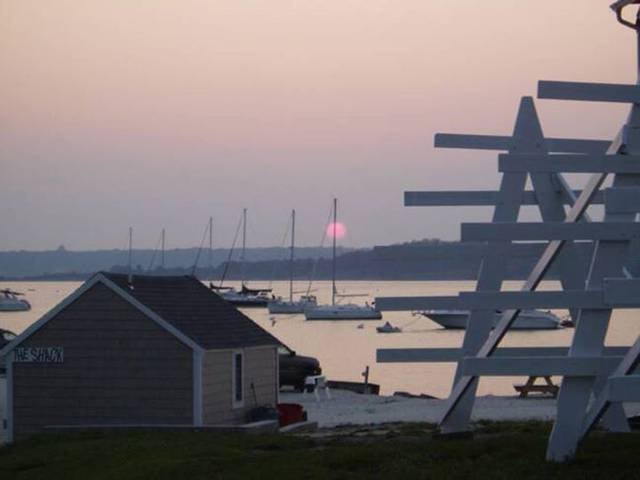
Sailing, Marina
Address: 252 Narragansett Ave, Jamestown
Watson Farm

Watson Farm in Jamestown, Rhode Island, United States, was established in 1789. Job Watson purchased a piece of the farmland, and for the next two centuries, five successive generations of the Watson family cultivated the land, changing their crops and practices as needed to adapt to the evolving market.
Today, the property is still a working family farm, and the 1796 house is still used as the farmers' residence. The farmers raise cattle and sheep for beef, lamb, and wool markets, grow acres of grass for winter hay supplies, make compost for fertilizer, and cultivate a large vegetable garden. The farm, which is owned by Historic New England, holds a CSA farmer's market each summer.[9]
Horsehead–Marbella
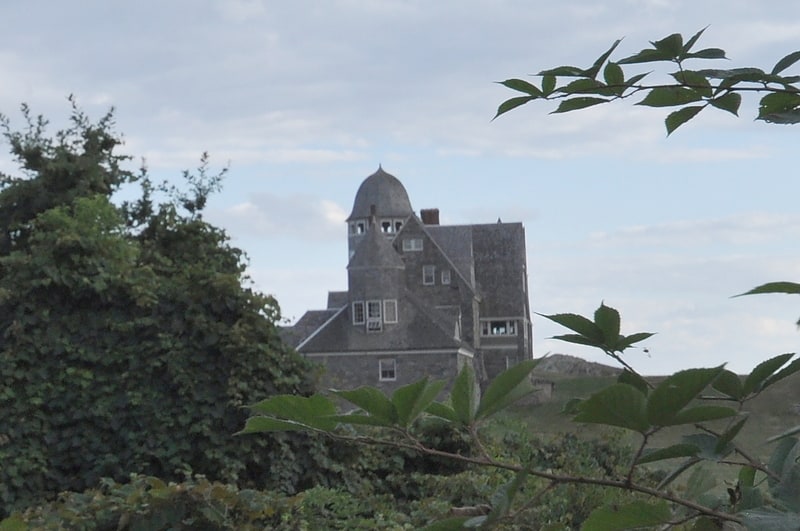
Summer house in Jamestown, Rhode Island. Horsehead/Marbella is an historic summer house at 240 Highland Drive in Jamestown, Rhode Island. Occupying a spectacular setting on a southerly-projecting peninsula, this Shingle style house and carriage house were designed by Charles L. Bevins and built for industrialist Joseph Wharton in the 1880s. It is also notable as an early example of the lower-key architectural styles associated with Jamestown's summer community, differentiating it from the more elaborate summer estates developed in nearby Newport.
The property was listed on the National Register of Historic Places in 1999. It continues to be owned by Wharton's descendants.[10]